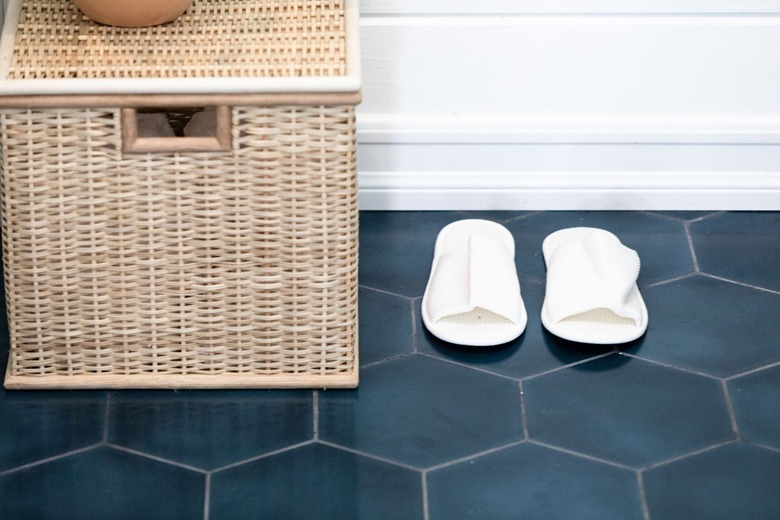How To Remove Mop & Glo From Ceramic Tile
We may receive a commission on purchases made from links.
For those who really get into cleaning with enthusiasm, there are few things as satisfying as a clean, shiny floor, and one of the preferred products long used for cleaning and shining is Mop & Glo. If you're one of those "more is better" types or if it really does appear after one application that extra shine is in order, according to product instructions, you can simply apply additional coats of the solution for a higher gloss. If, however, you decide to remove Mop & Glo from your ceramic tile, keep in mind that heavy buildup may create some measure of difficulty.
Do Not Use Mop & Glo on Unsealed Ceramic Tile
Do Not Use Mop & Glo on Unsealed Ceramic Tile
The British manufacturer of Mop & Glo, Reckitt Benckiser, promotes the product as a multisurface floor cleaner that can be used to clean, shine, and protect several types of flooring, including vinyl, marble, linoleum, no-wax, hardwood, and ceramic tile. But the company states that the product should be used only on sealed ceramic tile, not on unsealed ceramic.
It's important to understand that Mop & Glo is not just a cleaner. It actually cleans while depositing an acrylic coating onto the surface. If you've used just one coat on your sealed ceramic and decide to remove it, the job may go smoothly by following the company's instructions. If you've applied multiple coats, however, especially on an unsealed floor, and if repeating the suggested cleaning process isn't working, you may need to hire pros to bring in heavy-duty equipment for the job. You don't have to look far online to find videos from flooring experts who demonstrate the difficulties they have during the removal process and who suggest avoiding the product altogether.
How to Remove Mop & Glo
How to Remove Mop & Glo
According to the manufacturer, Mop & Glo can be removed from sealed ceramic tile flooring using a solution of 1/4 cup Lysol All-Purpose Cleaner and 1 cup ammonia added to 1/2 gallon of warm water.
Saturate a clean sponge with the solution and don't wring it out. Completely wet a small area of the floor, making sure that it's wet enough not to dry while it stands for two to three minutes. Next use either the same sponge (squeezed out) or a damp mop to aggressively go over the area, making sure you mop up excess moisture. Rinse the entire floor with clear water, working in sections and using a freshly rinsed mop for each section. If the floor remains sticky, repeat the entire process with an extra 1/2 cup of ammonia in the solution. If it begins to look like you're not going to be able to get all of the product removed, you'll need to call in a pro.
Warning
It's important to make absolutely sure that the Lysol cleaner you use is not one of the bleach-containing formulas that could result in creation of toxic and possibly deadly fumes when mixed with ammonia. Look for "sodium hypochlorite" — the chemical name for bleach — on the label. If you see it, don't buy the product.
Make a Test Sample
Make a Test Sample
If you're planning to use Mop & Glo and have a spare, unused tile on hand, coat the spare tile with the same number of coats of Mop & Glo and store it. Then if you decide at a later point to remove the product from your ceramic tile, try the recommended cleaning method on the sample to see how it works. If it doesn't remove all of the Mop & Glo, you can save yourself time and trouble by calling in an expert flooring cleaner.
